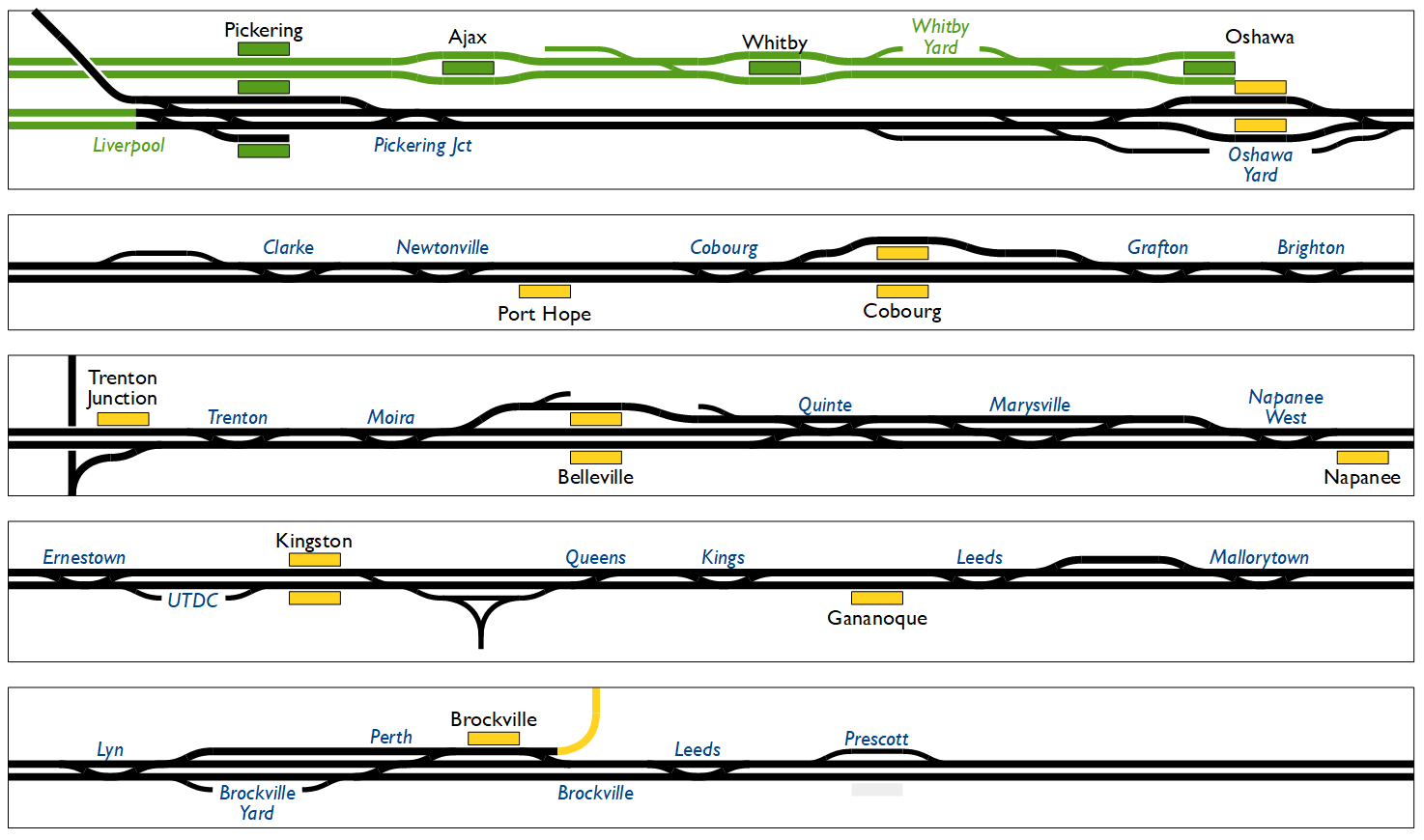The people who put that line on that map are those responsible for promoting the project (i.e. the HFR-TGF team), as the people who will be in charge of funding, designing, constructing and operating the project (i.e., whoever wins the ongoing RFQ/RFP-process) have yet to be found. Any proponent will consider the incremental costs and revenues of an Ottawa Bypass, but nobody with any advanced understanding of the Economics of building and operating intercity passenger rail projects will expect that building a bypass and depriving selected trains of any Ottawa ridership will stand a chance in comparison with the obvious alternative: increasing the frequency of Montreal-Ottawa-Toronto trains and shaving travel times for all Montreal-Toronto services (and not just a tiny number of Express services).
The Economics of planes (with their 78-seat vehicle sizes and no right-of-way construction costs) are fundamentally different from those of trains (with much larger vehicle sizes and massive ROW costs). Referring to a line drawn on a map shared with the public does not mean that that connection stands a chance in the real world.
That's a coherent and logical argument. But here is some text from
the Request for Qualifications on the requirements.
Faster service with shorter journey times between Major Cities (Québec City, Montréal, Ottawa and Toronto) that are less than:
o 4h10 between Toronto and Montréal
o 2h55 between Toronto and Ottawa
o 1h45 between Ottawa and Montréal
Note that Toronto-Ottawa plus Ottawa-Montreal equals 4h40 minutes, and with a stop in Ottawa is getting on for 5 hours, whereas Toronto Montreal has to be 4h10 at most. If these criteria stand (good question...) the proponent has either to shave of 40-50 minutes somewhere along the road (a faster 250 kph line, no intermediate stops) or take the "bypass" route.
Getting the speed out of the Peterborough to Smith's Falls segment is going to be difficult, and trains will have to slow from probably Richmond, past Fallowfield, and all the way through Ottawa even if running express to Montreal, and likely quite a bit of double tracking would be needed given the mix of fast and slower trains.
While the faster (near-)HSR possibilities are appealing, they will also be a lot more expensive, and the Feds might simply choke and stick with a 200 KPH solution. If so, bypassing Ottawa could well be the only way to meet the 4h10 mark. They could abandon that and say that all the money spent buys Toronto-Montreal trains that are still about 5 hours. Difficult choice, but I think it's a real one. We aren't privy to any discussions about use of non-VIA tracks held among the government, the proponents, and the railways that might influence the solution.





